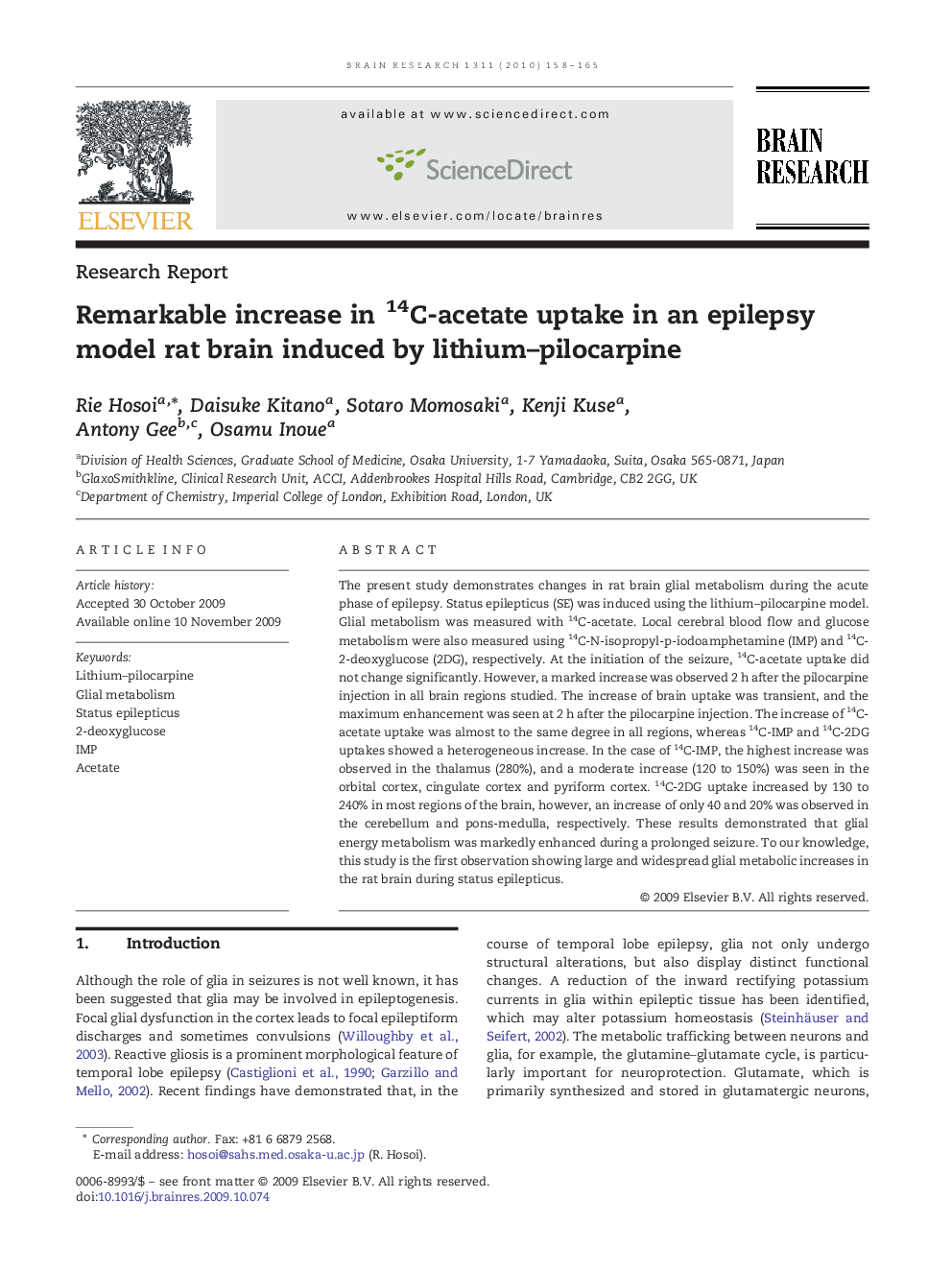| Article ID | Journal | Published Year | Pages | File Type |
|---|---|---|---|---|
| 4327490 | Brain Research | 2010 | 8 Pages |
Abstract
The present study demonstrates changes in rat brain glial metabolism during the acute phase of epilepsy. Status epilepticus (SE) was induced using the lithium-pilocarpine model. Glial metabolism was measured with 14C-acetate. Local cerebral blood flow and glucose metabolism were also measured using 14C-N-isopropyl-p-iodoamphetamine (IMP) and 14C-2-deoxyglucose (2DG), respectively. At the initiation of the seizure, 14C-acetate uptake did not change significantly. However, a marked increase was observed 2Â h after the pilocarpine injection in all brain regions studied. The increase of brain uptake was transient, and the maximum enhancement was seen at 2Â h after the pilocarpine injection. The increase of 14C-acetate uptake was almost to the same degree in all regions, whereas 14C-IMP and 14C-2DG uptakes showed a heterogeneous increase. In the case of 14C-IMP, the highest increase was observed in the thalamus (280%), and a moderate increase (120 to 150%) was seen in the orbital cortex, cingulate cortex and pyriform cortex. 14C-2DG uptake increased by 130 to 240% in most regions of the brain, however, an increase of only 40 and 20% was observed in the cerebellum and pons-medulla, respectively. These results demonstrated that glial energy metabolism was markedly enhanced during a prolonged seizure. To our knowledge, this study is the first observation showing large and widespread glial metabolic increases in the rat brain during status epilepticus.
Related Topics
Life Sciences
Neuroscience
Neuroscience (General)
Authors
Rie Hosoi, Daisuke Kitano, Sotaro Momosaki, Kenji Kuse, Antony Gee, Osamu Inoue,
